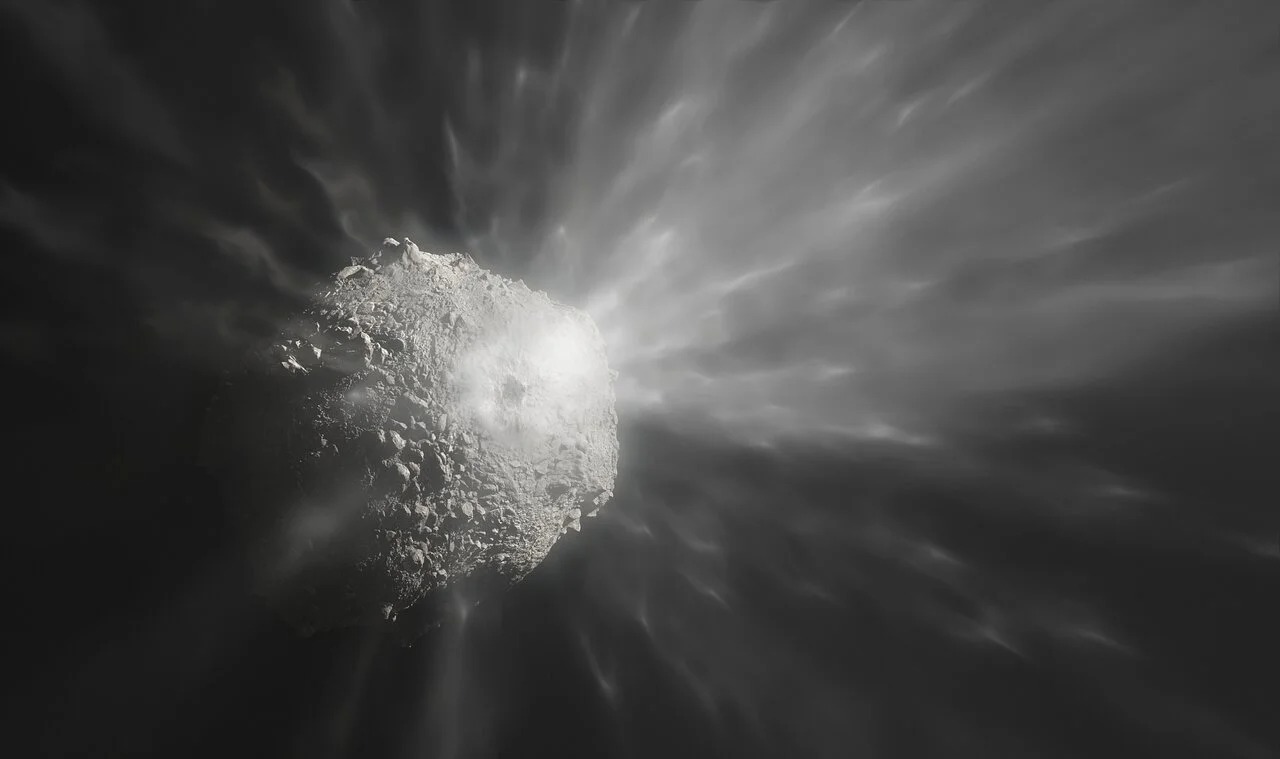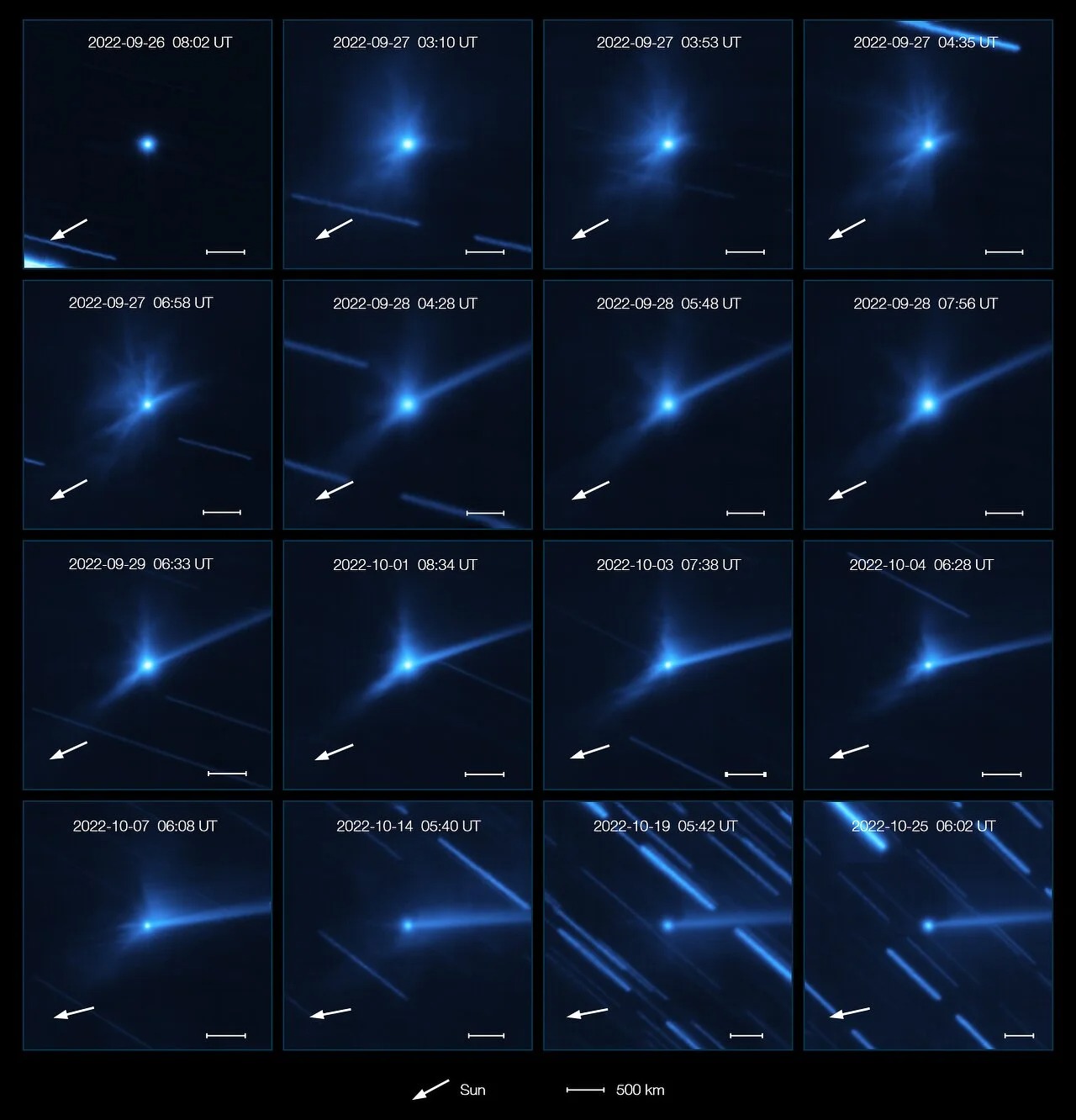Last year, NASA deliberately collided a spacecraft with an asteroid. The main task was to test the possibility of protecting the Earth from cosmic danger. At the same time, it was a unique opportunity for scientists to observe the asteroid system and see the consequences of the accident, allowing them to learn more about what they consist of. In early March, Hubble showed the consequences of this collision a few months after the incident. But now we can see the collision from a different angle, taken by the Very Large Telescope of the European Southern Observatory (ESO’s VLT).

After the collision of the DART probe with the asteroid Dimorphos, a long dust “tail” was formed from the ejected material, which stretched for hundreds of kilometers in space. The study of this ejection using spectroscopy allowed the researchers to determine that the cloud formed after the collision did not contain oxygen or water molecules. The researchers expected that the asteroid would not have traces of water or oxygen, but its small contents were in tanks on board the spacecraft.

Another study examined how an asteroid changed after a DART collision with it, looking at how light was reflected from it. The team found an increase in brightness and changes in polarization, indicating that the impact could have destroyed the dim outer layer of the asteroid to reveal brighter and untouched material underneath. In addition, it is possible that the impact threw out small particles of material, which may also explain why they reflect more light.
Finally, the European Southern Observatory combined data from various studies together with images taken from the spacecraft’s camera before the collision to create an artistic illustration of a space crash.
Earlier we reported how the Dimorphos asteroid “lost weight” by a thousand tons as a result of the DART impact.
According to The Astrophysical Journal Letters
Follow us on Twitter to get the most interesting space news in time
https://twitter.com/ust_magazine

